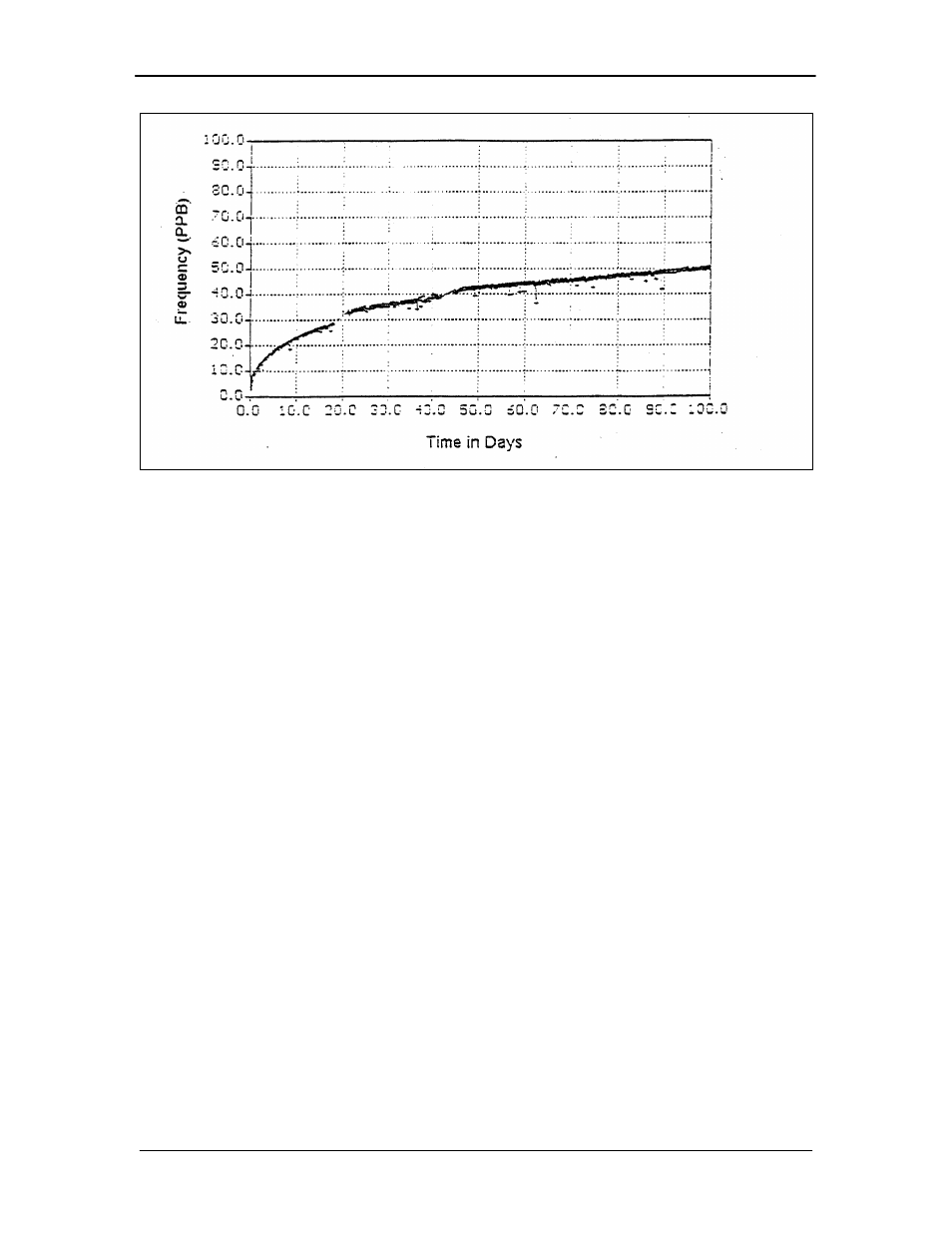Comtech EF Data SFC1800A User Manual
Page 39

SFC1800A Synthesized Frequency Upconverter
User Interfaces
TM111 – Rev. 1.0
4-15
Figure 4-2. Typical Reference Aging vs. Time
Long-term stability of the reference is affected by factors
other than temperature. Over days and months, the
frequency of the reference will drift at a rate specified as
aging. Typical aging rates of 1 to 5 parts in 10
-10
per day
are typical in a crystal that has been stabilized for a few
weeks. The first month of operation for any crystal is a
time where drift due to aging can be excessive.
The typical aging curve provides insight into the
exponential decay in aging rate for a 10 MHz Reference.
Converters shipped from the factory have had their
reference oscillator aged for a minimum of 30 days and
in addition, the aging rate has been verified in the final
week to within tolerance. However, converters that have
been in storage or powered off for a period of several
weeks will exhibit a phenomenon whereby the aging
curve return to the slope shown for zero days of aging.
This aging reset in not well understood but the
manufacturers of crystals believe it to be related to a
gradual relaxation of the molecular makeup of the quartz
substrates and the conductive films deposited on the
quartz.
The rule of thumb when checking the frequency
accuracy of the converter is to make sure that the crystal
has stabilized before attempting any adjustment. For
units that have been in storage or shipment for more
than a week, allow several days of operation before
verifying the accuracy. For this reason, converters
shipped from Radyne are typically powered-up until the
final day before shipment. In addition, the accuracy and
aging rate are verified immediately prior to shipment.
